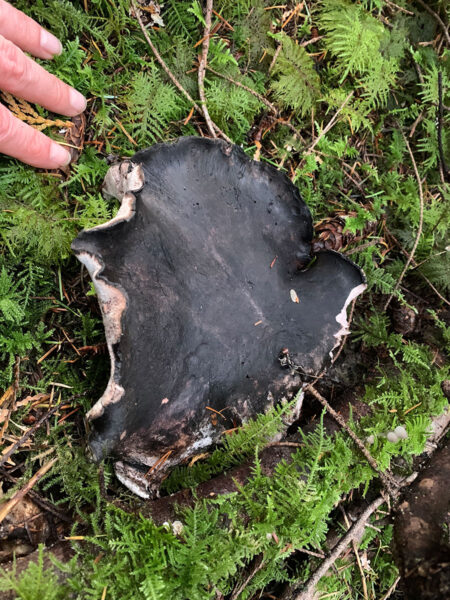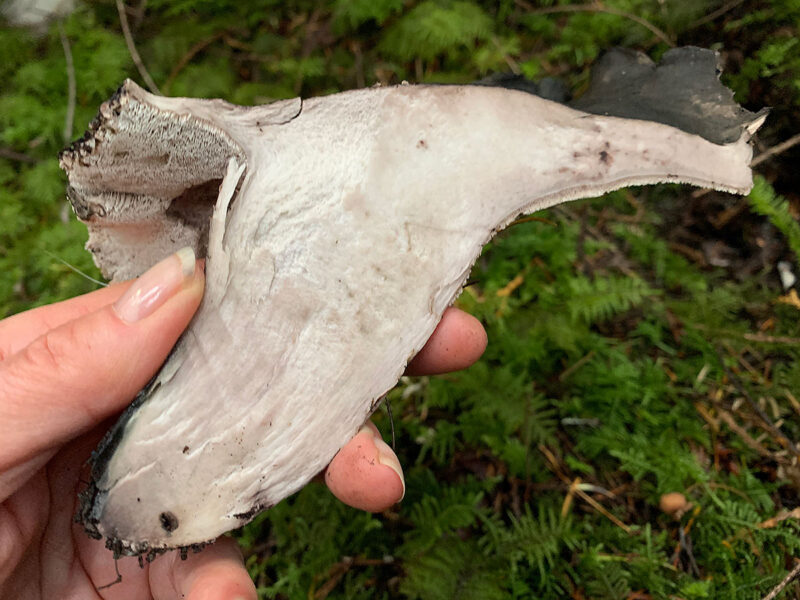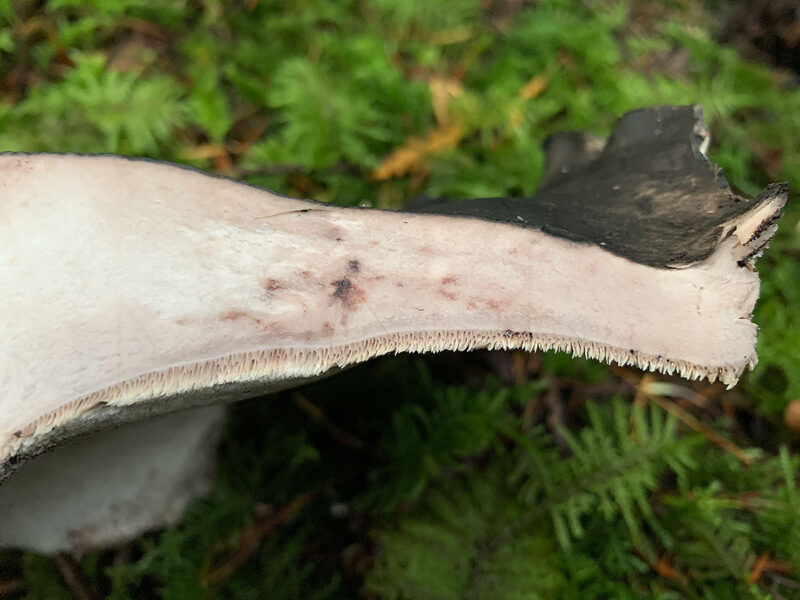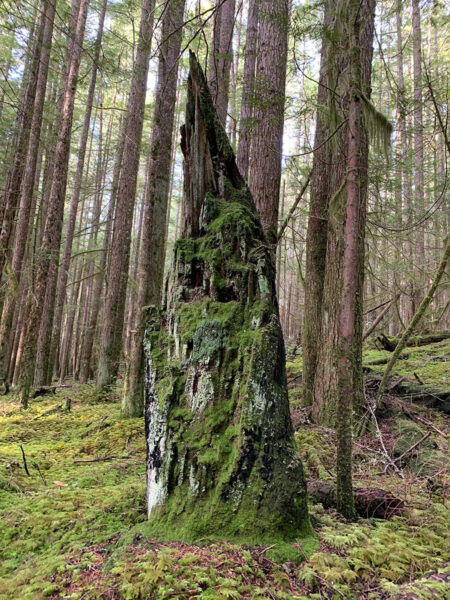Ever since exploring upper Wilson Creek in 2014 and seeing Hawk Wings, McDowell’s been obsessed with them. If Balfour had a dollar for every time McDowell mentions them… And what’s the big deal? Well (a) they have a beautiful design (b) they have teeth (c) they’re massive and (d) there’s something wondrous about them.
So, while roaming the mossy growth on Mount Elphinstone in search of pines, Balfour came across this beauty. Thinking it a polypore at first attached to a log, she was surprised to find a sturdy stipe. She called McDowell over and a sense of excitement filled the air. What was this hefty, proud looking fungi? And yes, after a bit of examination both agreed, an elder hawk wing.

This elder no longer had it’s famous hawk wing pattern.

Now that’s a heft mushroom.

The teeth were so compacted together it was like one smooth undermass.

Did a close up and there are the teeth!

And then the clincher. This gorgeous remains of a tree. Hawk wings always lead to something beautiful and here it was. McDowell knew in her heart and head that yes, she and Balfour were experiencing the joy of another hawk wing.
About the HawkWing Mushroom (Sarcodon imbricatus)
Sarcodon imbricatus, commonly known as the shingled hedgehog, scaly hedgehog or a hawk wing, is a species of tooth fungus in the order Thelephorales. The mushroom itself is edible. Many sources report it has a bitter taste, but others have found it delicious and suspect that the bitter specimens may be similar related species. The mushroom has a large, brownish cap with large brown scales and may reach 30 cm (12 in) in diameter. On the underside it sports greyish brittle teeth instead of gills, and has white flesh. The spore print is brown. It is associated with spruce (Abies), appearing in autumn. It ranges throughout North America and Europe, although collections from the British Isles are now assigned to another species.
The mushrooms, or fruiting bodies, can be quite large in size. the brownish or greyish cap measures up to 30 cm in diameter and is covered with coarse darker brown scales. It is funnel-shaped. The underside bears soft, pale grey ‘teeth’ rather than gills. These are 0.5–1 cm long and brittle. The pale grey or brown stem may reach 8 centimetres high and 3 centimetres wide, and may be narrower at the base and is sometimes eccentric.
The fungus can be bitter, although this is less apparent in younger specimens. Submerging the mushrooms in boiling water will remove this. It can be pickled or dried and used as flavouring. In Bulgaria it is collected, dried and finely ground to be used as an aromatic mushroom flour. It is reported as edible but of poor quality in the United States by some sources but as deliciously edible by others.
More information: Sarcodon imbricatus: Wikipedia